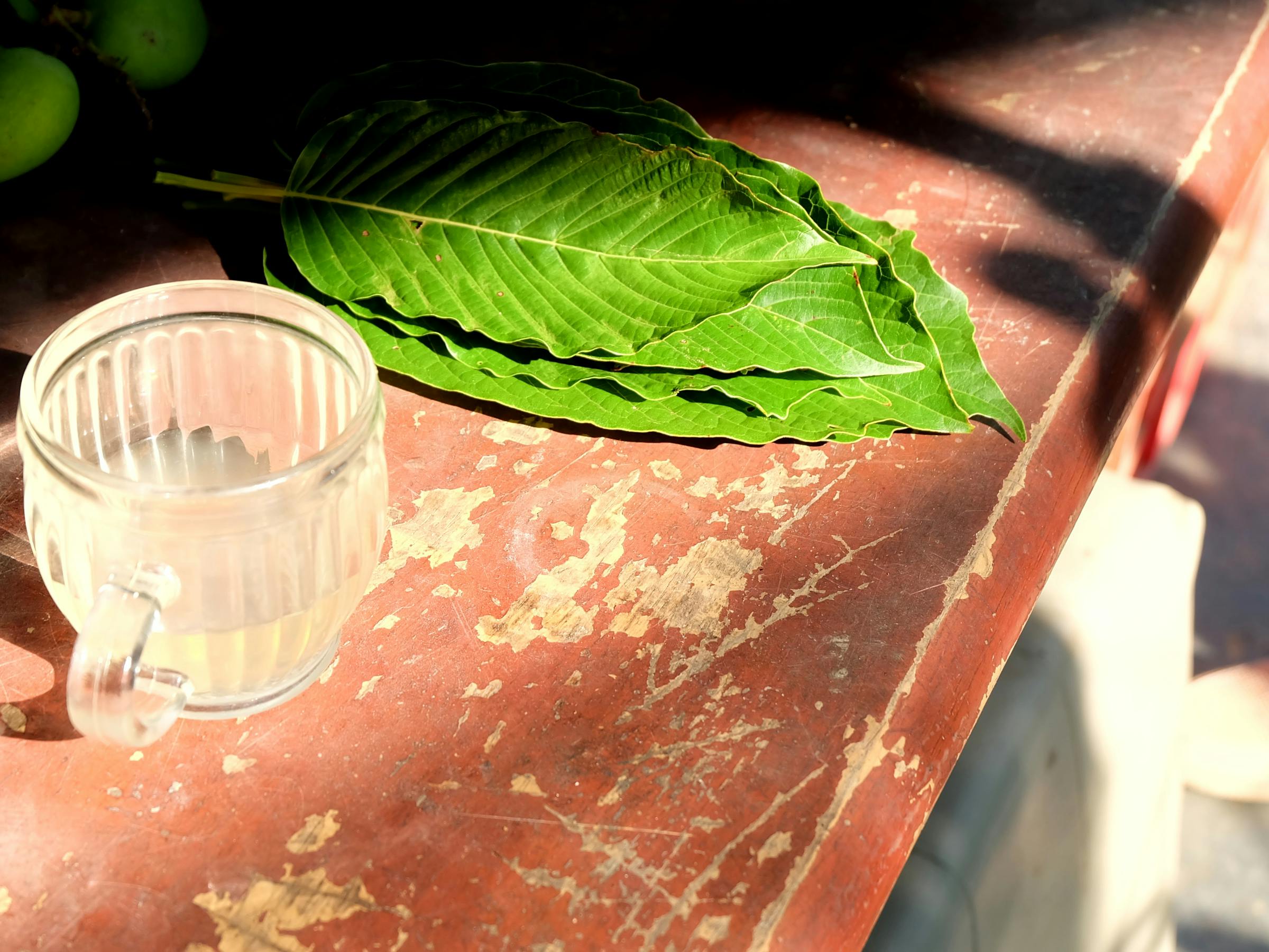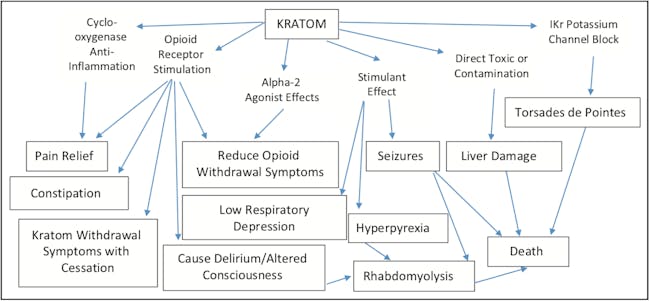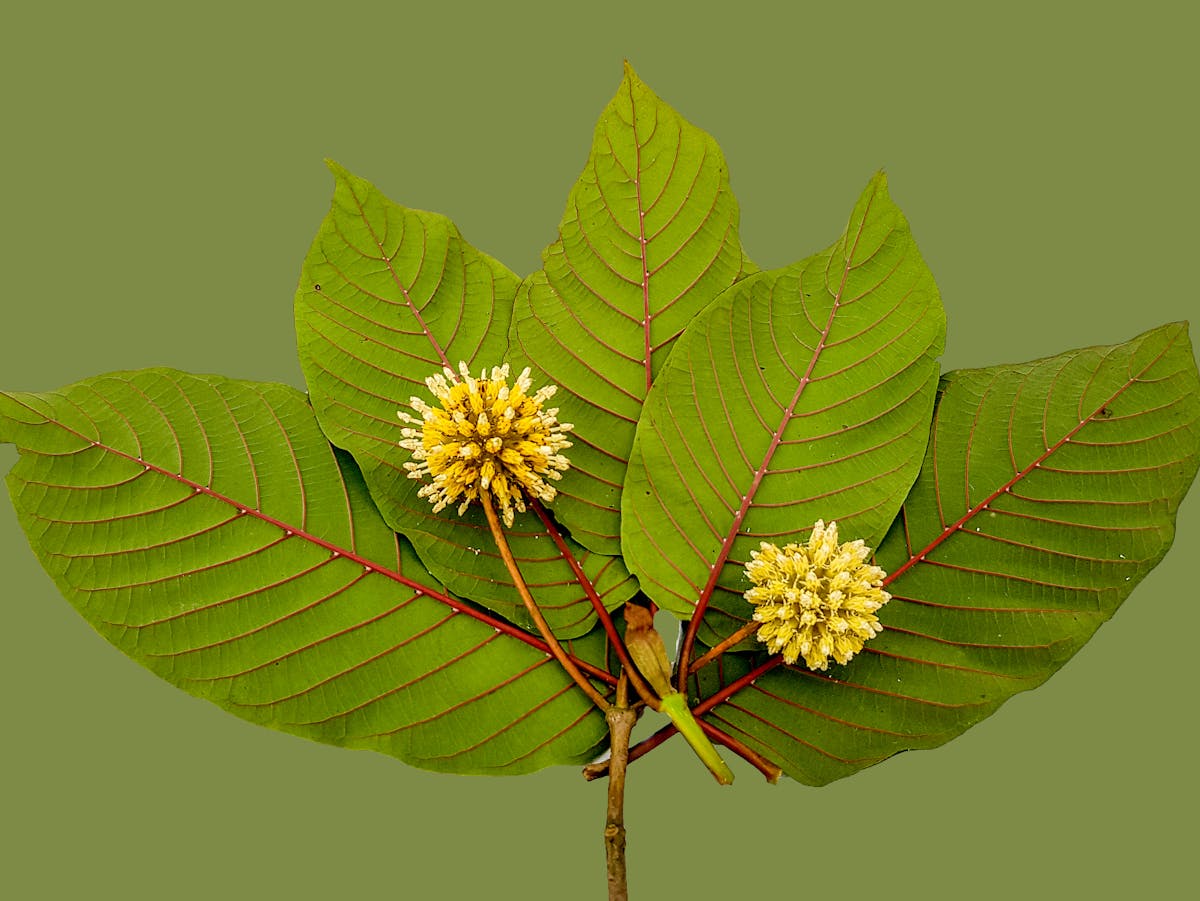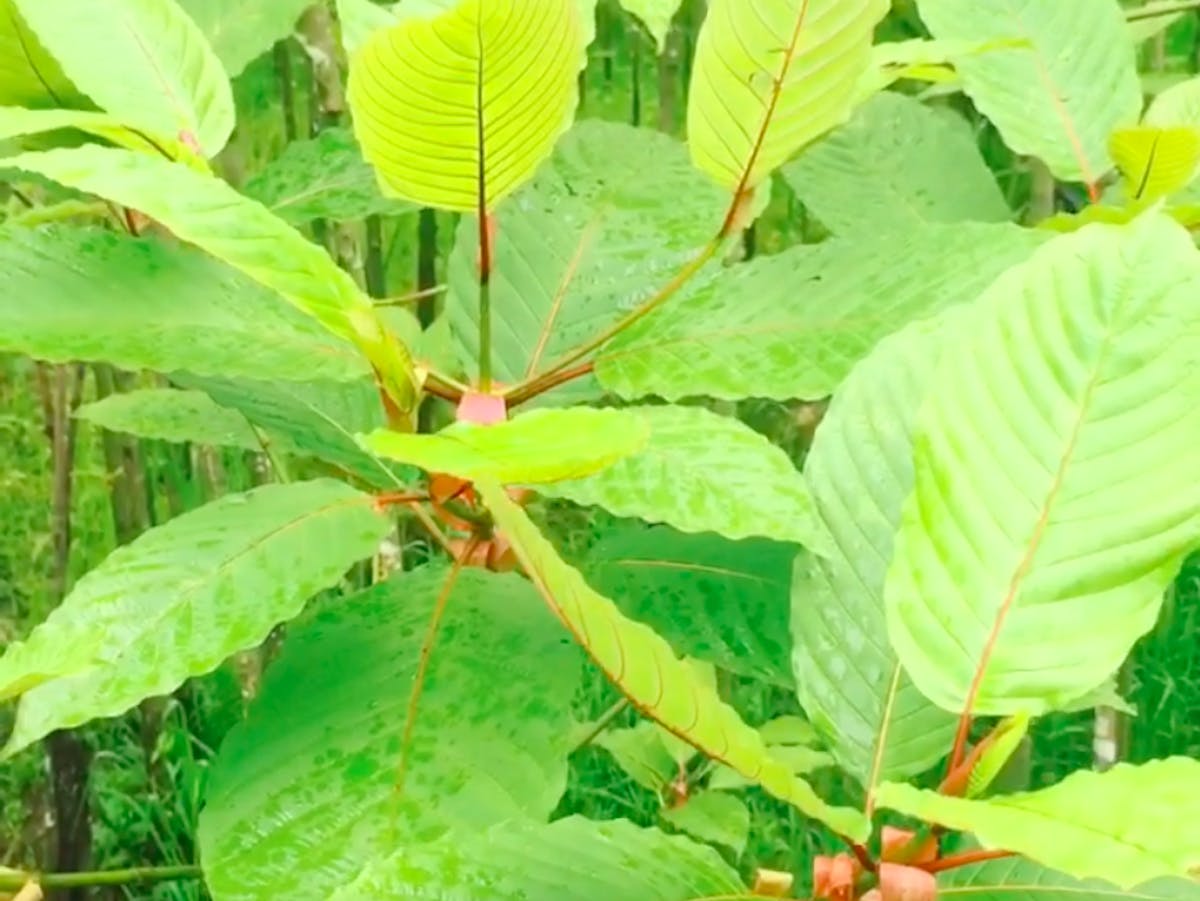“We have the opportunity this time around to do it the right way.”
By Peter Hesson
Kratom may be the most popular drug you’ve never heard of. Millions in the United States reportedly use it, but the leaf from southeast Asia has received praise and derision in equal amounts in the last several years. Kratom evangelists on Youtube and Reddit tout its advantages over opioids like oxycodone, while critics say it’s ungoverned and possibly dangerous.
A new report published this month in the American Journal of Health-System Pharmacy lays out the case for a possible solution the debate: Put the drug behind pharmacy counters, and sell it to adults — without a prescription.
This new research proposes a middle ground between the “ban it” and “keep it” factions.
The US Food and Drug Administration (FDA), the Centers for Disease Control and Prevention (CDC), and the Drug Enforcement Administration (DEA) have all had kratom squarely in their crosshairs since at least 2016 when the DEA tried to make it illegal — it still lists kratom as a “drug of concern.” This pressure has spurred the growth of an activism community fighting to keep it legal. And all the while, US consumer demand continues to fuel the industry, which sells directly to consumers over Facebook and Twitter, and stretches to the other side of the globe.
The controversy over kratom, which can be easily purchased online or in convenience stores, comes down to the tension between its risks and benefits. While the drug has shown therapeutic potential for people dealing with opioid withdrawal and chronic pain, it also has opioid properties and carries a risk of physical dependency.
To foster an evidence-based public conversation around the future of kratom, C. Michael White, Pharm.D., head of the Department of Pharmacy Practice at the University of Connecticut, authored this new clinical and pharmacological assessment.
White tells Inverse that he was motivated by the increasing amount of data researchers are producing on the substance, especially data on its potential to carry adverse effects including withdrawal and possibly death — though the FDA and CDC’s conclusions on the latter are hotly debated. While most of the new data reviewed in the report isn’t extremely strong, it sheds light on some of the poorly understood aspects of kratom.
“That’s a double-edged sword, because the quality of the data still has very significant limitations, but it seemed like a lot of noise out in the field,” White says.
White’s goal with the new review — which is an update to an earlier report he authored in 2017 — was to put all the recent findings together and provide clarity on what the research says about kratom, as well as where there are still gaps in our understanding.

Among these research gaps are questions about kratom’s effects on the heart, its potential for contributing to fatal overdoses (on its own or in combination with other drugs), and the role contamination may play in kratom’s health risks.
In all three of these areas, White’s report points out that right now, there is just enough evidence out there to get the public worried — but not quite enough to paint a picture of the drug’s benefits and risks. Regarding overdose deaths, the CDC reported kratom as a cause of death in 91 overdose cases in an 18-month period, but experts point out that most of these deaths involved combinations of other drugs that could be life threatening on their own. In terms of contamination, the FDA issued a mandatory recall of several kratom brands in 2018 amid a Salmonella outbreak linked to kratom, as well as a report in April 2019 that several brands of kratom products had tested positive for heavy metals.
White hopes that by laying both these concerns and the potential benefits out in one place, doctors and first responders will get a better understanding of how to treat adverse side-effects of kratom.
Kratom’s effects on the heart are a relatively new area of study, as a 2014 study in PLOS One showed that the active molecules in kratom changed the electrical activity of human heart cells in a lab. This suggests that people who take kratom could be at risk of a fatal heart arrhythmia called Torsade de Pointes.
But that study was only done in cells in a lab. So its results, while concerning, don’t yet carry the weight of a case report or clinical trial in humans. Nonetheless, White says other clinicians have reported that his previous kratom assessment helped them understand what was going on with a patient who came to them in distress after using the drug — a drug with which a lot of doctors aren’t yet familiar.
Even the early lab findings in the new report could help doctors pursue the right course of treatment if a patient presents experiences health problems after taking kratom, instead of treating it like a typical opioid overdose.

“You might think, ‘I should just give them naloxone, and they’ll be fine,’ but if what they’re having is ventricular arrhythmia, then naloxone isn’t going to do anything for them because that’s not an opioid receptor-related phenomenon,” White tells me.
Considering all the remaining unknown factors surrounding kratom and its effects on human health, White’s proposed solution seeks to tread cautiously while also maintaining access for people who find it helpful for treating pain or withdrawal.
The strategy outlined in this paper could be a great approach for balancing competing interests, says David Kroll, Ph.D., professor of pharmacology at the University of Colorado Skaggs School of Pharmacy.
“I liked the tone of his abstract in the sense that he does recognize either banning or failure to ban it is a bad thing,” Kroll tells Inverse.
“And a good middle ground that would serve both patients and public health would be for kratom to be behind the pharmacy counter, which would imply that you could have some degree of patient counseling opportunity.”
Despite pharmacists’ relative lack of education in natural drugs, White is optimistic that they could be trained to take on this new responsibility. He cites the fact that pharmacists weren’t giving vaccines a decade ago but have now become the second most common flu immunizers in the country.

A potential shortcoming of the new report, Kroll points out, is that presenting these adverse events without explaining the doses at which they occur could be confusing for a non-scientist reading the paper.
“If I were to write this review article myself, I would have liked to see a table where he goes through the individual effects,” Kroll says. “I would have preferred if he had concentrations at which those effects occurred,” he adds. After all, some of the studies White cites in the report used concentrations of kratom alkaloids much higher than those a human would normally consume — in some cases, higher than a human even could consume.
White agrees that in the below diagram, his report links intermediate health outcomes mostly seen in animals or in vitro to final health outcomes that have been linked to kratom use in humans, all without listing concentrations, but he says that’s not the main point.
“It would probably be improved if I could make a determination of the concentrations achieved in both settings versus the usual kratom use setting,” says White. “However, this would make it much, much more complex and misses the reason I created it.”

That reason: to help doctors and paramedics right now.
Of course, this report isn’t the last word on kratom. While it’s meant to be a resource for healthcare professionals, it identifies as many research gaps as it fills.
According to a study by the American Kratom Association, an advocacy group, over 15 million Americans use kratom regularly. (The organization also makes the questionable claim that “kratom is not a drug,” but for now it’s the only source of kratom prevalence data in the US, so we’re stuck with that rough estimate of 15 million until an unbiased party conducts a new survey.)
The AKA bases this number on data from southeast Asian kratom exporters. By this estimate, 1,950 metric tons come from Asia to the US each month, which roughly translates to 15,600,244 US kratom consumers using about 4.2 grams per day per user. Regardless of questions around these numbers, it’s undeniable that the demand for Asian kratom in the US is booming.

In Pontianak, the capital of the Indonesian province of West Kalimantan, farmers and sellers sometimes ship hundreds of tons of kratom a month, Bloomberg previously reported. Kratom is native to Indonesia and several other southeast Asian countries, but Indonesia’s kratom-friendly laws have made it a global hub.
Out of all the kratom that passes through Pontianak, 95 percent goes to the US, AFP reports. And despite the FDA issuing “import alerts” giving US authorities permission to seize international kratom shipments in 2012 and 2014, kratom is still flowing into the US in pretty major quantities.
Inverse reviewed recent shipping records from Indonesian kratom sellers showing packages that contain anywhere from 4 to 44 pounds of kratom at a time going to the US and Canada, as well as Peru (where shippers often send their leaves for further processing).
Rio Rinaldi, a kratom vendor Inverse spoke to through WhatsApp, showed us a warehouse full of wrapped pallets that he said contain a total of 27 tons of kratom. He sells powdered leaf and concentrated kratom extracts through his company, which is called Borneo Botanicals98 and operates over Twitter and Whatsapp. The warehouse where he processes leaves into powder and packages them for shipment is in Pontianak. He buys his leaves from farmers in the surrounding parts of West Kalimantan, where they harvest from mature Mitragyna speciosa trees on the banks of the Kapuas River.
Rinaldi says he has never had issues with packages being confiscated by customs officials in the US, and he doesn’t seem worried about the publicity. Several other Indonesian kratom sellers told Inverse the same thing. After all, growing and exporting kratom is legal in Indonesia.
Set before the backdrop of the opioid overdose crisis that claims tens of thousands of lives per year in the US, an unregulated drug with opioid properties that’s pouring in from overseas seems like an obvious target for law enforcement and lawmakers.
And as the FDA, CDC, and DEA have circled around kratom, more and more advocates claim it helps them, and research labs in the US have begun examining the drug more closely, White says there’s still a crucial misunderstanding of kratom’s risks and benefits in the public discussion.



In his view, one of the most significant points he raises in the new report is that when weighing the risks and benefits of kratom, researchers and regulators shouldn’t just consider whether kratom has any risks at all. If that was the case, then its well-documented risks and poorly-documented benefits would make a clear case for a ban. But it’s not that simple. Rather, he says its risks should be compared to the risk of not having kratom.
“It’s much much more complicated than that because you really shouldn’t be comparing it against placebo, you should be comparing it against what people are likely to do if kratom was not available,” White argues.
In other words, lawmakers and regulators shouldn’t assume that banning kratom would result in people using nothing. Instead, it would likely result in them using illicit opioids like heroin or fentanyl, or using loperamide, the over-the-counter anti-diarrheal drug that can help people self-medicate opioid withdrawal symptoms — and which carries similar potential heart health risks as kratom.
“For a lot of reasons, people are either unwilling or unable to access those services, so in those people, what are their options? Their options are to use kratom, to use loperamide, or to use illicit substances,” he says.
“So when you think about the 45,000 people that are dying, mostly from respiratory depression from those illicit substances, I think it gives you a different perspective.”

Contrary to what FDA officials may wish, kratom doesn’t seem to be going away any time soon.
For instance, just this week a man was arrested transporting over 400 pounds of kratom through Alabama, one of the handful of US states where it is illegal. Absent any solid numbers on kratom usage, anecdotal reports like this arrest and the multiple instances of Indonesian kratom wholesalers like Rinaldi sending me their price lists on Twitter every week, it’s safe to say that kratom is here to stay.
Kratom, by the most generous possible estimates, has been the sole cause of death for fewer than 100 people in over a decade. Realistically, that number is much much lower.
Given that tens of thousands of people die each year in the US from opioid overdoses, and that the drug war has failed to stem the supply of fentanyl into the US, White’s proposal of enlisting healthcare professionals to help administer kratom to patients could be a powerful harm reduction measure.
White argues that his cautious middle-of-the-road approach — which neither the FDA nor the hardcore kratom activists agree with — is a lonely place to be, but also the right place to be. He likens the current kratom climate to marijuana 30 years ago, when research was restricted by its status as an illegal drug.
“Everybody should not have access to marijuana, but in certain cases or with certain disorders there are people who can benefit from it. And we would’ve known a lot more about it and we would’ve been able to help people if we’d been able to do that type of work a lot sooner,” he says.
“We have the opportunity this time around to do it the right way.”
Original Story By https://www.inverse.com/article/60375-what-do-we-still-not-know-about-kratom







